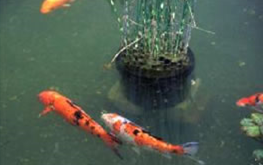Boerner’s Rose Garden Sustainability Plan…2022
Marian French, Rose Garden horticulturist – Boerner Botanical Gardens
In recent years, Boerner’s signature Rose Garden has come a long way in achieving long term sustainability.
- In 2015-2016, the Boerner horticulturist formerly in charge of the Rose Garden began the process of introducing new, disease-resistant varieties of roses to the collection.
- By 2017 the plywood rose shelters formerly erected each year for winter protection were eliminated, saving hundreds of work hours, and allowing newly planted varieties to demonstrate their hardiness.
- Subsequent years saw a drastic decrease in the spraying program and additions of more roses.
- As of 2021, the Boerner horticulture team no longer uses systemic pesticides in the Rose Garden, as they were found to have a possible link to severe injury or death of pollinators.The one exception is an organic insecticide that only harms rose eating insects, making it bee and pollinator safe.
- While we still spray herbicide occasionally to maintain Boerner’s walking paths, all that is used in the Rose Garden is selected based on what will do the least harm to our environment.In spring 2022, a new fertilizer regimen was implemented using organic soil ingredients to feed the soil, including a mid-season application of organic fish emulsion fertilizer. This mix has made a noticeable difference in the health of Boerner’s roses.
- Also in 2022, in order to further support pollinators and helpful garden insects, new plantings of perennials were added, strategically, to beds that were previously solid roses.
By increasing flower diversity, more species of insects will be present in the garden, which in turn helps balance pest populations and leads to healthier plants.
- Finally, through partnerships with the Friends of Boerner (FBBG), the Wisconsin Master Gardeners, and the Greater Milwaukee Rose Society, we have begun hosting Rose Garden workdays, in order to engage with a broader community audience and encourage increased public investment in historic Boerner’s signature Rose Garden.
- The goal of the Rose Garden is to reflect and preserve landscape architect *Al Boerner’s original design and vision, which he created in 1939, to display the hardiest/newest roses for our region.
Boerner’s removal of winter protection (plywood enclosures), virtually no spraying, and no synthetic fertilizers allows us to demonstrate to our community and the public at large, our commitment to produce genuinely, naturally hardy varieties.
Our goal is to continue working toward the addition of roses each season, researching more natural and organic cultural methods, and increasing our public outreach about sustainable
roses and how to grow them.
*Alfred L. Boerner designed historic Boerner Botanical Gardens, which opened in 1939.
The Rose Garden is one of the original showplaces at Boerner.
ROSE GARDEN AT BOERNER BOTANICAL GARDENS
“…I will never be able to look at it without a deep warmth in my heart. For this is the rose above all others that my mother especially loved.”
– Agnes Rothery, quote from The Joyful Gardener, 1927
For centuries, summer has been the season of the rose. In medieval times the rose was such a popular flower that it was referred to as “Flos Florum”, flower of flowers!
Here in the Rose Garden among great stone arbor pillars, water flows from ornamental fountains, colorful Koi fish swim in a central pool, and we are blessed with roses all summer long.

Waves of bloom begin in the latter part of June with Hybrid Tea, Floribunda and Grandiflora Roses. Spectacular second and third waves occur in mid-August and late September respectively. Shrub and Miniature Roses bloom continuously throughout the growing season!
Rose enthusiasts will be delighted to find collections of Old Garden, Miniatures and Romantica Fragrance Roses; current and past All-America Rose Selection Winners; and winter-hardy selections from the Canadian explorer, Dr. Buck, and David Austin series.

In addition, Tree, Hybrid Perpetual, China, Polyantha and Climbing Roses can be found. Immerse yourself in beauty with a visit to this exquisite garden where over 5000 rosebushes from 550-plus varieties are sure to please the rose lover and convert the casual observer!
The Rose Garden that today’s visitor sees at Boerner is very much the same garden seen by guests in the 1930s. Many of the roses originally planted in this Garden were provided by Eugene Boerner. Eugene was the brother of former Gardens Director and Gardens namesake, Alfred Boerner.

Eugene Boerner, know to rose enthusiasts as “Papa Floribunda”, was an expert rose hybridizer. His work with Jackson & Perkins Roses is said to have put the company on the map. Some of the roses donated by Eugene Boerner still flourish in the Rose Garden today.
The fancy Koi fish that swim in the Rose Garden’s central pool spend the summer at the Gardens enchanting the passersby. In late fall, these fish are moved to tanks at the Milwaukee County Zoo where they are kept through the winter.
For more information about roses, click on The Milwaukee Rose Society.
